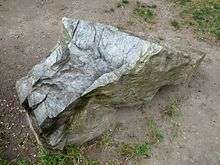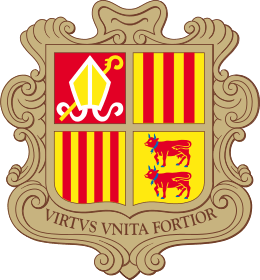Geology of Andorra


Andorra is located in the Axial Zone of the central Pyrenees mountain range in south western Europe, which means that it has intensely folded and thrusted rocks formed when the Iberian peninsula was rotated onto the European continent.
Rocks from the Cambrian or Ordovician occur in the form of conglomerate, limestone, phyllite, quartzite, and slate. Diapirs of slate from the Silurian Period are found in the Llavirsi syncline near Bixessarri in the south west. Gneiss and schist are found in the cores of anticlines in the north east of the country. This gneiss contains muscovite. The antiforms are connected with near horizontal shear zones, containing nappes of metamorphosed sediments. Younger overlying Paleozoic metamorphosed sediments found over most of Andorra have also been steeply folded.
In the south east of the country is an alkaline granite from a batholith called Mt-Louis-Andorra Batholith. It extends into Spain and covers an area of 600 km2 (230 sq mi). Different rock composition zones occur, with monzogranite found at the centre, quartz diorite at the edge and granodiorite in intermediate parts. The batholith has caused metamorphism on its western edge. The base of the batholith is exposed in the east of Andorra.
In the Central and Eastern Pyrenees, which includes Andorra, no fossils older than the Ordovician Caradoc 450–460 million years ago have been found.[1]
Glaciation
Andorra was extensively glaciated during the Quaternary; glaciers flowed down all of the major valleys of Andorra, merging into one large glacier at Escaldes-Engordany, which in the coldest stage reached as far south as Pont de la Fontaneda near Santa Coloma.[2] Andorra has numerous glacial erosional features, including U-shaped valleys, cirques, arêtes, and roche moutonnées. Examples of cirques include the Cirque de Pessons in the east, Llac de Tristaina in the northwest, and the two cirques at approximately 2400 m elevation on Pic de Casamanya (2740 m).[2] Santa Coloma has a glacial terminal moraine.
References
- Andorra by P. M. Oliver and E. M. Moores in Eldridge M. Moores, Rhodes Whitmore Fairbridge: Encyclopedia of European and Asian Regional Geology, 1997 Springer, p. 26.
- Berga 24 Mapa Geologico 1:200.000, 1970, Instituto Geologico Y Minero de Espana.

